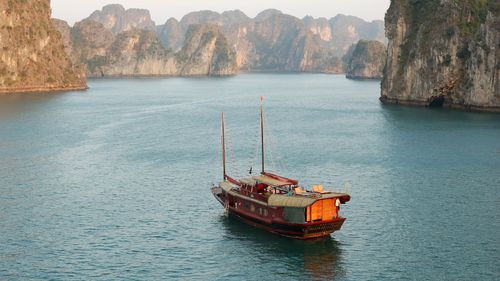
Cat Ba Island
Cat Ba Island stands as the largest among the 367 islands that form the Cat Ba Archipelago, covering 262.41 km2 (101.32 sq mi). Situated on the southeastern fringes of Lan Ha Bay in Northern Vietnam, it echoes the majestic and rugged landscapes found in Ha Long Bay. Designated as a UNESCO Biosphere Reserve in 2004, the archipelago has further gained recognition as part of the Ha Long Bay - Cat Ba Archipelago World Heritage Site since 2023.
Cat Ba Island, once a hidden treasure, has now emerged as a top destination for tourists exploring Hai Phong, all thanks to its pristine turquoise waters and enigmatic caves. With this travel guide, nature enthusiasts will discover another essential destination to add to their travel itineraries.
A significant portion of the island, along with the entire archipelago, is designated as a National Park, underscoring the local government's commitment to preserving Cat Ba's rich biodiversity. Visitors to Cat Ba are treated to a diverse landscape comprising mangroves, limestone karsts, verdant forests, white sandy beaches, and vibrant coral reefs.
Encompassing over 26,000 hectares of biodiverse terrain, Cat Ba holds the distinction of being Vietnam's third biosphere reserve. Its recognition by UNESCO as a Biosphere Reserve Zone in 2004 further highlights its ecological significance.
The island's terrain is renowned for its karst formations, characterized by limestone mountains, captivating caves, and inviting white sandy shores, all contributing to its distinctive charm.
For transportation, visitors can opt to rent motorbikes to traverse the island and explore its many attractions. A highly recommended activity is trekking through the National Park and ascending Ngu Lam mountain for panoramic views.
Cat Ba Island boasts three main beaches—Cat Ba 1, Cat Ba 2, and Cat Ba 3—where visitors can bask in the sun and enjoy refreshing swims in the ocean. Adventure enthusiasts can partake in rock climbing, kayaking, and snorkeling.
The ideal time to visit Cat Ba Island depends on personal preferences. For those fond of tropical summers, June to August offers optimal weather conditions. Alternatively, October to March provides milder temperatures. However, travelers should note the island experiences distinct rainy and dry seasons, with May to September being rainy and November to March classified as dry. March, April, September, and October are generally regarded as the best months to visit, offering a balance of favorable weather conditions.


